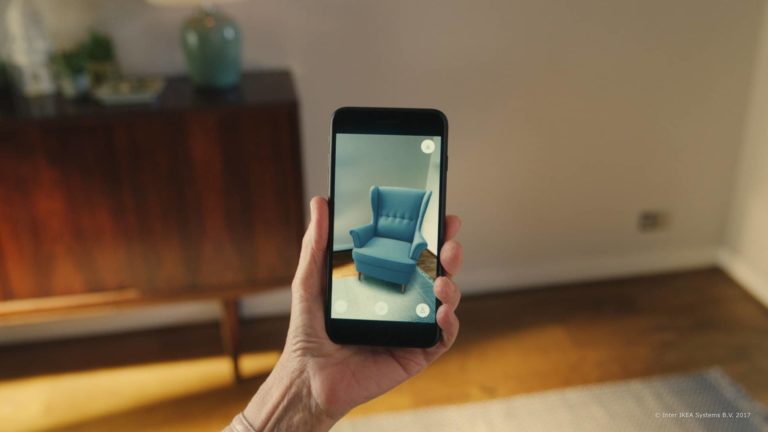
AR continues to evolve and take shape. Like other tech sectors, it has spawned several sub-sectors that comprise an ecosystem. These include industrial AR, consumer VR, and AR shopping. Existing alongside all of them – and overlapping to some degree – is AR marketing.
Among other things, AR marketing includes sponsored AR lenses that let consumers visualize products in their space. This field – including AR creation tools and ad placement – could grow from $2.78 billion last year to $9.85 billion by 2026 according to ARtillery Intelligence.
Factors propelling this growth include brand advertisers’ escalating affinity for, and recognition of, AR’s potential. More practically speaking, there’s a real business case. AR marketing campaigns continue to show strong performance metrics when compared with 2D benchmarks.
But how is this coming together? And what are best practices? These questions were tackled in a recent report by ARtillery Intelligence, containing narrative analysis, revenue projections, and campaign case studies. It joins our report excerpt series, with the latest below.
Feedback Loop
One of AR’s biggest revenue categories is marketing. These are experiences that allow consumers to activate their smartphone cameras to overlay branded animations on the real world. This is usually done to promote, visualize or let consumers try on a given brand’s products.
Formats include transaction-enabled shopping experiences and immersive ads. The former sits in a sub-category known as camera commerce which can happen through a brand’s own channels (e.g., apps, product packaging, etc.). It can also happen through paid amplification.
The latter comprises AR ads which are paid placements to distribute AR experiences such as sponsored lenses on Instagram or Snapchat. This ad spending (not counting campaign creation & software), is projected to grow from $2.3 billion last year to $7.8 billion by 2026.
Accelerating this spending is a feedback loop of campaign performance, results, and ROI. This causes AR marketing investment to grow in the form of recurring campaigns among brand advertisers, as well as new entrants that hear about its effectiveness through case studies.
Lastly, the Covid era contained several AR-accelerants. Retail lockdowns forced brand marketers to adopt technology that brings more IRL dimension to eCommerce. Covid-inflicted digital transformation in general has also forced them to re-evaluate advertising strategies.
This is what historically happens in economic downturns. Though advertising is a recession-prone spending category, emerging ad formats tend to benefit as brand marketers are forced to think differently. This led to the rise of search and social advertising in past downturns.
Spanning the Funnel
Another influential factor driving AR marketing is its ability to span the consumer purchase funnel. It’s conducive to upper-funnel reach and lower-funnel response. This is a rare attribute in advertising media, as a sliding scale usually exists between endpoints of the funnel.
For example, upper-funnel advertising includes TV, newspaper, and billboard advertising: It’s all about reach and brand awareness. Lower funnel advertising includes things like search: It’s all about high-intent action, but it’s relatively sub-optimal for widescale brand awareness.
Back to AR, it can span this funnel by achieving high-reach distribution in places like Instagram and Snapchat. From there, it can achieve high performance (as we’ll demonstrate in case studies) when users activate immersive product try-ons, then purchase items on the spot.
That last step – the actual transaction – is the most impactful. AR’s inherent visualization can boost these conversion rates, which are also accelerated by transactional functionality that’s increasingly baked into lens-forward social channels like Instagram and TikTok.
We’ll pause there and circle back in the next report excerpt with case studies that demonstrate the above principles…






